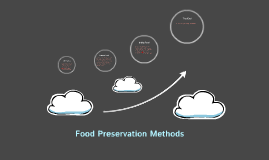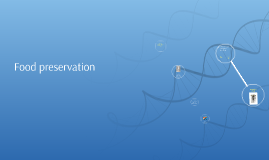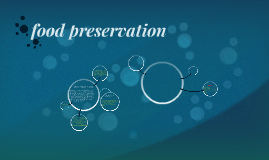Food Preservation
Transcript: "About N2Ingredients." About N2Ingredients. N.p., n.d. Web. 16 Nov. 2013. <http://www.n2ingredients.com/about.php>. "BHA and BHT." About.com Chemistry. N.p., n.d. Web. 16 Nov. 2013. <http://chemistry.about.com/od/foodcookingchemistry/a/bha-bht-preservatives.htm>. "BHA and BHT." David Suzuki Foundation. N.p., n.d. Web. 15 Nov. 2013. <http://davidsuzuki.org/issues/health/science/toxics/chemicals-in-your-cosmetics---bha-and-bhti/>. Brain, Marshall . "How Food Preservation Works." HowStuffWorks. N.p., n.d. Web. 16 Nov. 2013. <http://science.howstuffworks.com/innovation/edible-innovations/food-preservation.htm>. "Discovery Health." 'Discovery Fit & Health : Sara Novak'. N.p., n.d. Web. 15 Nov. 2013. <http://blogs.discovery.com/dfh-sara-novak/2011/10/are-irradiated-foods-safe-to-eat.html>. "Early methods of food preservation." Early methods of food preservation. American Chemical Society, n.d. Web. 13 Nov. 2013. <http://acswebcontent.acs.org/landmarks/landmarks/frozen/fro2.html>. "Food Preservation." Boundless. N.p., n.d. Web. 16 Nov. 2013. <https://www.boundless.com/microbiology/industrial-microbiology/food-preservation/food-preservation/>. "Food Preservation." World of Microbiology and Immunology. N.p., n.d. Web. 14 Nov. 2013. <http://www.vfu.cz/pub-files/informace-o-univerzite/rektoratni-pracoviste/jazyky/vyucovane-predmety/h3aj-bc-fvhe-2013/index/13.-tyden-food-preservation.pdf>. "Food Science." Microorganisms in Milk. University of Guelph, n.d. Web. 15 Nov. 2013. <https://www.uoguelph.ca/foodscience/dairy-science-and-technology/dairy-microbiology/microorganisms-milk>. Helmenstine, Anne. "BHA and BHT." About.com Chemistry. N.p., n.d. Web. 16 Nov. 2013. <http://chemistry.about.com/od/foodcookingchemistry/a/bha-bht-preservatives.htm>. Nummer, Brian . "Historical Origins of Food Preservation." National Center for Home Food Preservation. N.p., n.d. Web. 18 Nov. 2013. <http://nchfp.uga.edu/publications/nchfp/factsheets/food_pres_hist.html>. "Photo Gallery." www.theloop.ca. N.p., n.d. Web. 16 Nov. 2013. <http://www.theloop.ca/living/food/photo-gallery/-/p/5039/photo_gallery_lifestyle_canadian_invented_foods/854434>. "Potential Career Paths and Salaries." Food Science Major (Penn State University). N.p., n.d. Web. 17 Nov. 2013. <http://foodscience.psu.edu/majors/careers>. "Preserving food." Preserving food. N.p., n.d. Web. 16 Nov. 2013. <http://archive.food.gov.uk/hea/teachers/plainenglish/part10.html>. Bibliography freezing food as fast as possible to prevent large ice crystals preserves better and maintains a more firm and natural texture as opposed to slow freezing unnatural and synthetic but more effective various health implications and more that are not yet known BHA and BHT are used to prevent fats and oils from going rancid by oxidizing with oxygen found in foods such as butter, meat, cereal, gum also commonly used in cosmetics, rubber products and food packaging CONTROVERSY most common form of food preservation low temperatures slow down enzyme activity and bacterial growth temperatures below zero leave bacteria inactive their activity is drastically decreased when not in ideal conditions harmless to food source of radioactivity comes from Cobalt-60 recommended for patients with very low immune systems and American astronauts lactic acid ferments lactose to lactic acid pH levels in milk are ideal for bacterial growth fermentation spoils the milk to an edible product ancestors knew how to use the fermentation to produce cheese Most bacteria die within seconds Irradiation Radioactive Food?!? both are derived from petroleum known as the two most dangerous preservatives may be carcinogenic banned in Australia, Japan, Sweden warning labels are mandatory in California limit consumption to 1 gram/day Enzymes proteins that affect the rate of decomposition by acting as a catalyst has a fold that acts as a pocket to produce a product from two different substrates new product causes a change in concentration, increasing the rate of reaction results in food spoiling or discolouring quickly < 0°C Pasteurization Fermentation > 75 °C Food Preservation r= ∆c/Δt Chemical Preservatives Product Developer osmosis draws out moisture dry environments are not ideal for bacteria 4 °C - 59 °C invented by Louis Pasteur in the 1860's psychrotrophs are killed at high temperatures 63°C - 65°C for 30 min or 90°C - 140°C for one second gets rid of the need for refrigeration Ranked by Profit Magazine as one of Canada's Top 50 emerging growth companies 5 out of the past 7 years A member of QuantamShift, an entrepreneurial association improve food products invent brand new products involves a lot of lab work need a background in biology, chemistry and food science Salary $45,000- >$110,000 Average: $70,000 numerous studies over the past 40 years reduces number of microorganisms without compromising texture, taste or nutritional value radiation in the form of high energy electrons, gamma rays or X-rays usually done with raw meat, fresh foods

















